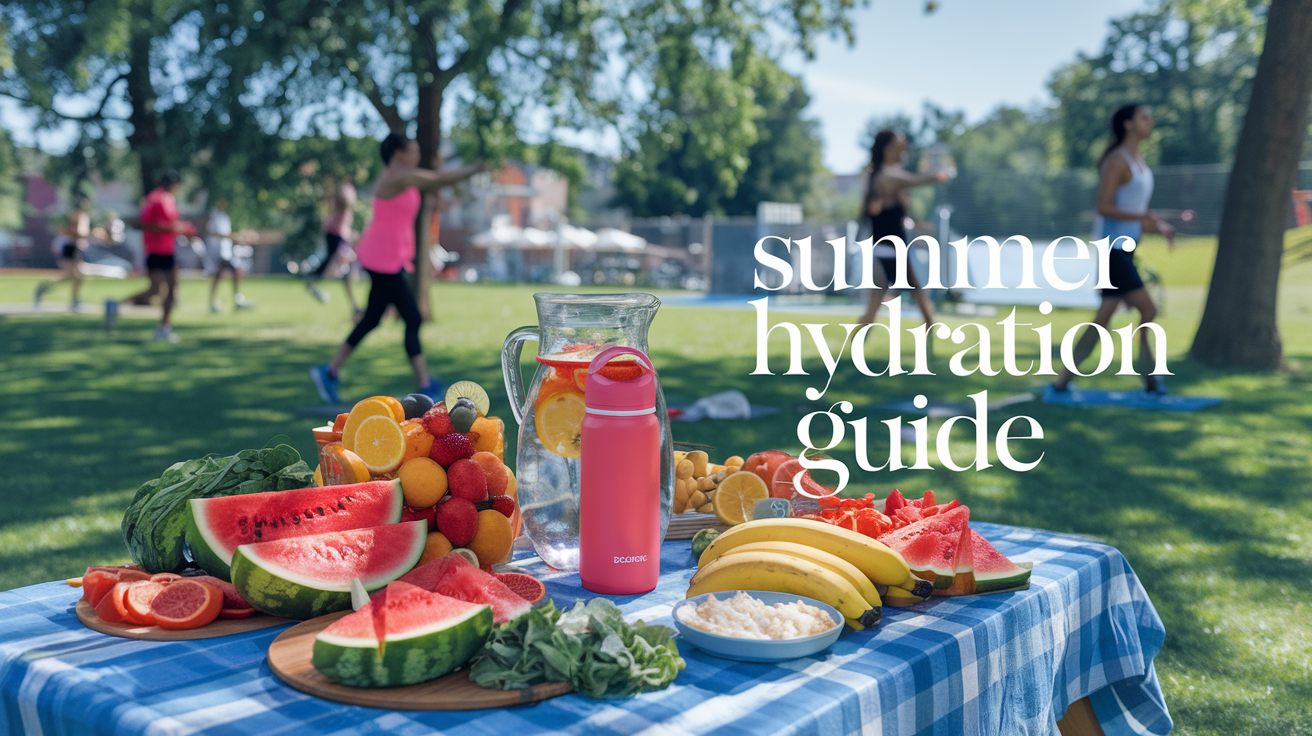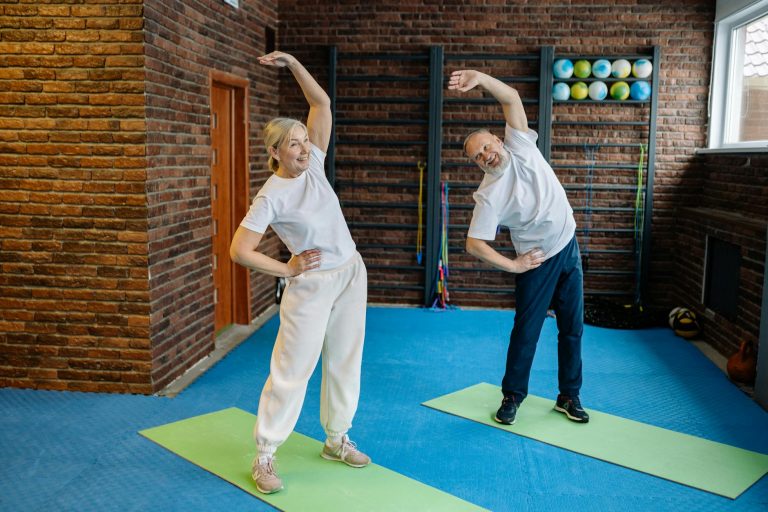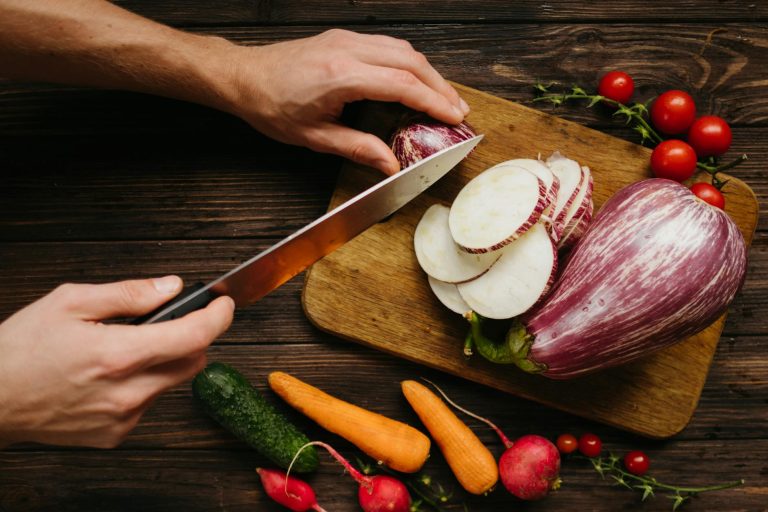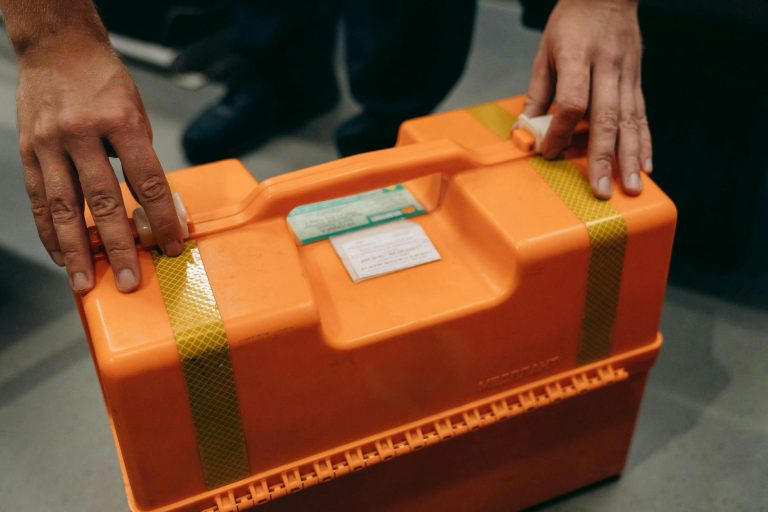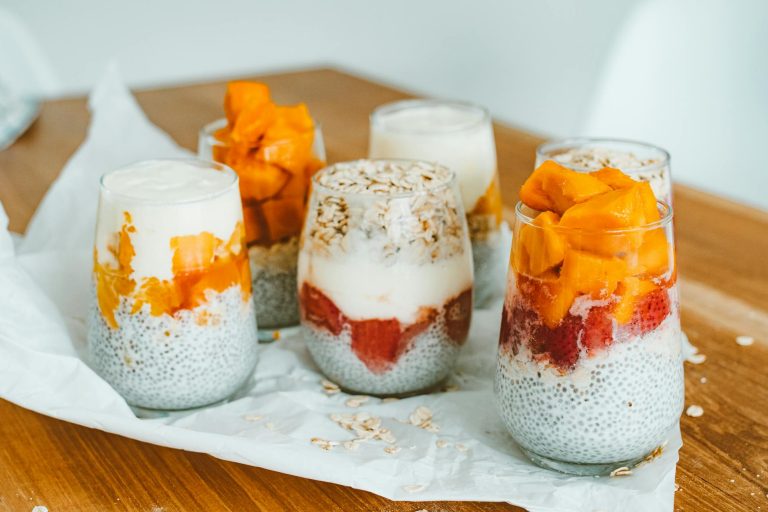Summer Hydration Guide: Electrolyte-Rich Foods and Drinks
As the mercury rises and sweat beads on your brow, staying hydrated becomes more crucial than ever. But did you know that simply chugging water might not be enough? 💧 Enter the unsung heroes of summer hydration: electrolytes. These tiny charged particles play a massive role in keeping your body functioning optimally, especially when the heat is on.
Imagine this: You’re out enjoying a sunny day, but suddenly you feel dizzy, fatigued, and your muscles start cramping. 😖 These could be signs that your electrolyte balance is off kilter. The good news? You don’t need to rely solely on sports drinks to replenish these essential minerals. Nature has provided us with a bounty of delicious, electrolyte-rich foods and refreshing beverages that can keep you hydrated and healthy all summer long.
In this comprehensive guide, we’ll dive into the world of electrolytes, exploring their importance for hydration and unveiling a treasure trove of foods and drinks that can help you maintain optimal fluid balance. From understanding the basics to avoiding common hydration pitfalls, we’ve got you covered. So, let’s beat the heat and quench our thirst for knowledge as we explore the best ways to stay hydrated this summer! 🌞🥤
Understanding Electrolytes and Hydration
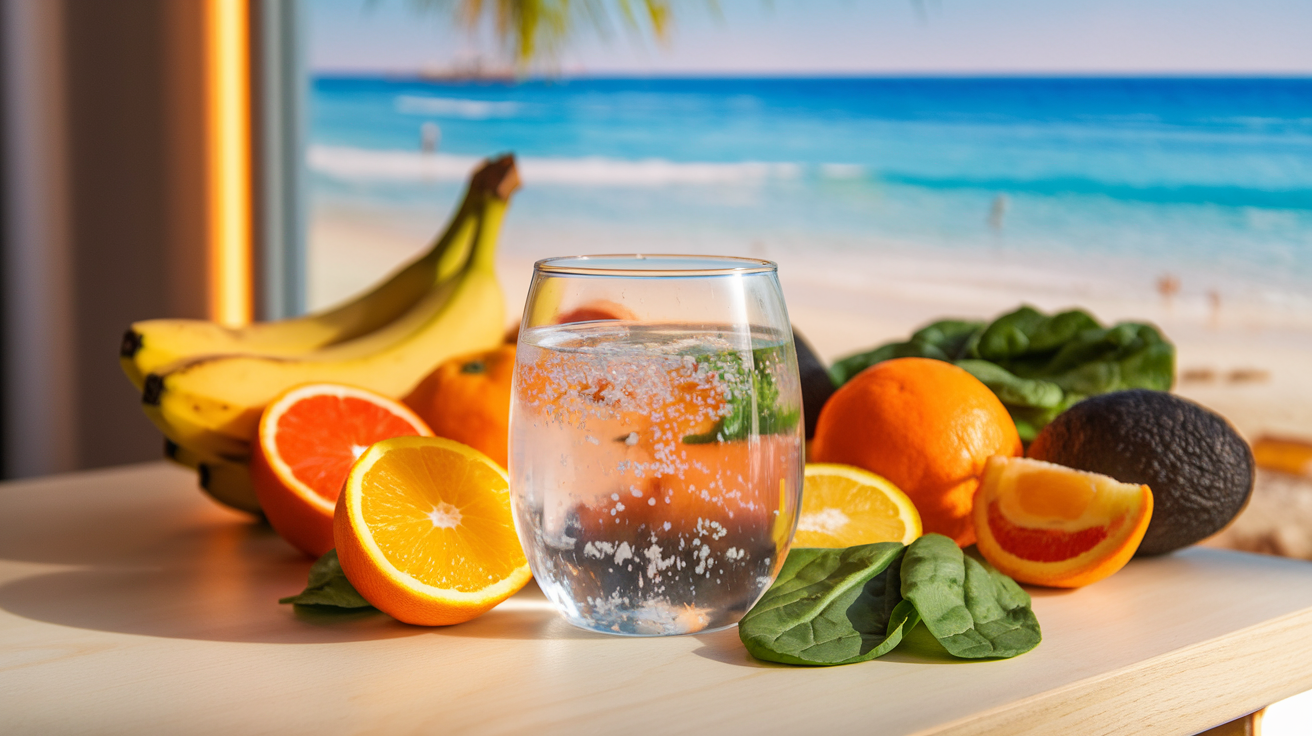
What are electrolytes and why they matter
Electrolytes are essential minerals dissolved in our blood and bodily fluids that carry an electric charge. These minerals play a crucial role in various bodily functions, including:
- Regulating nerve and muscle function
- Hydrating the body
- Balancing blood acidity and pressure
- Helping rebuild damaged tissue
The most common electrolytes in our body include:
| Electrolyte | Primary Function |
|---|---|
| Sodium | Fluid balance, nerve function |
| Potassium | Heart rhythm, muscle function |
| Calcium | Bone health, muscle contraction |
| Magnesium | Energy production, muscle relaxation |
| Chloride | Fluid balance, digestion |
Maintaining proper electrolyte balance is crucial for optimal health, especially during summer when we lose more fluids through sweat.
Signs of electrolyte imbalance
Recognizing the signs of electrolyte imbalance is essential for maintaining good health. Common symptoms include:
- Muscle cramps or weakness
- Irregular heartbeat
- Fatigue
- Headaches
- Nausea or vomiting
- Confusion or irritability
If you experience these symptoms, especially during hot weather or after intense physical activity, it may indicate an electrolyte imbalance.
The role of hydration in summer health
Proper hydration is crucial for overall health, particularly during summer months when temperatures rise. Here’s why staying hydrated is vital:
- Temperature regulation
- Joint lubrication
- Nutrient transportation
- Waste removal
To maintain optimal hydration, consider the following strategies:
- Drink water regularly throughout the day
- Consume electrolyte-rich foods and beverages
- Monitor urine color (pale yellow indicates good hydration)
- Increase fluid intake during physical activity or hot weather
Now that we understand the importance of electrolytes and hydration, let’s explore some top electrolyte-rich foods perfect for summer consumption.
Top Electrolyte-Rich Foods for Summer
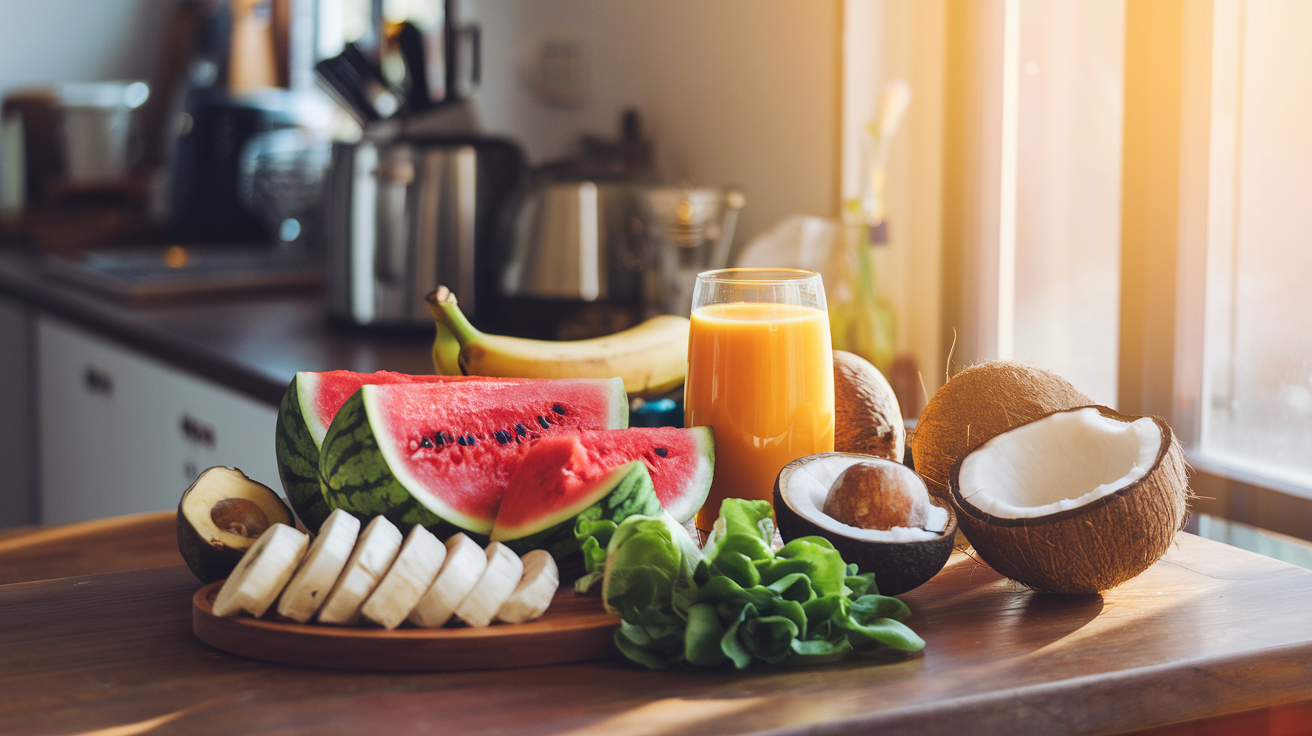
A. Leafy greens and their benefits
Leafy greens are powerhouses of hydration and electrolytes, making them essential for summer nutrition. Here’s a list of top leafy greens and their benefits:
- Spinach: Rich in potassium and magnesium
- Kale: High in calcium and vitamin K
- Swiss chard: Excellent source of iron and vitamin A
- Romaine lettuce: Contains sodium and folate
These greens not only provide electrolytes but also offer fiber and antioxidants, supporting overall health during hot summer months.
B. Nutrient-packed fruits to keep you hydrated
Fruits are nature’s hydration helpers, packed with water and essential electrolytes. Here’s a comparison of popular summer fruits:
| Fruit | Water Content | Key Electrolytes |
|---|---|---|
| Watermelon | 92% | Potassium, Magnesium |
| Strawberries | 91% | Potassium, Calcium |
| Cantaloupe | 90% | Potassium, Magnesium |
| Peaches | 89% | Potassium, Magnesium |
These fruits not only quench your thirst but also provide vital nutrients and natural sugars for quick energy.
C. Salty snacks that replenish electrolytes
While it may seem counterintuitive, some salty snacks can help replenish electrolytes lost through sweat. Consider these options:
- Salted nuts (almonds, cashews)
- Whole grain crackers with sea salt
- Olives
- Pickles
These snacks provide sodium, which is crucial for maintaining proper fluid balance in the body.
D. Protein-rich options for balanced hydration
Protein plays a vital role in hydration by helping your body retain water. Include these protein-rich foods in your summer diet:
- Greek yogurt
- Cottage cheese
- Lean meats (chicken, turkey)
- Tofu or tempeh
These options not only contribute to hydration but also support muscle recovery and satiety.
Now that we’ve explored electrolyte-rich foods, let’s move on to discuss hydrating drinks that go beyond plain water.
Hydrating Drinks Beyond Water
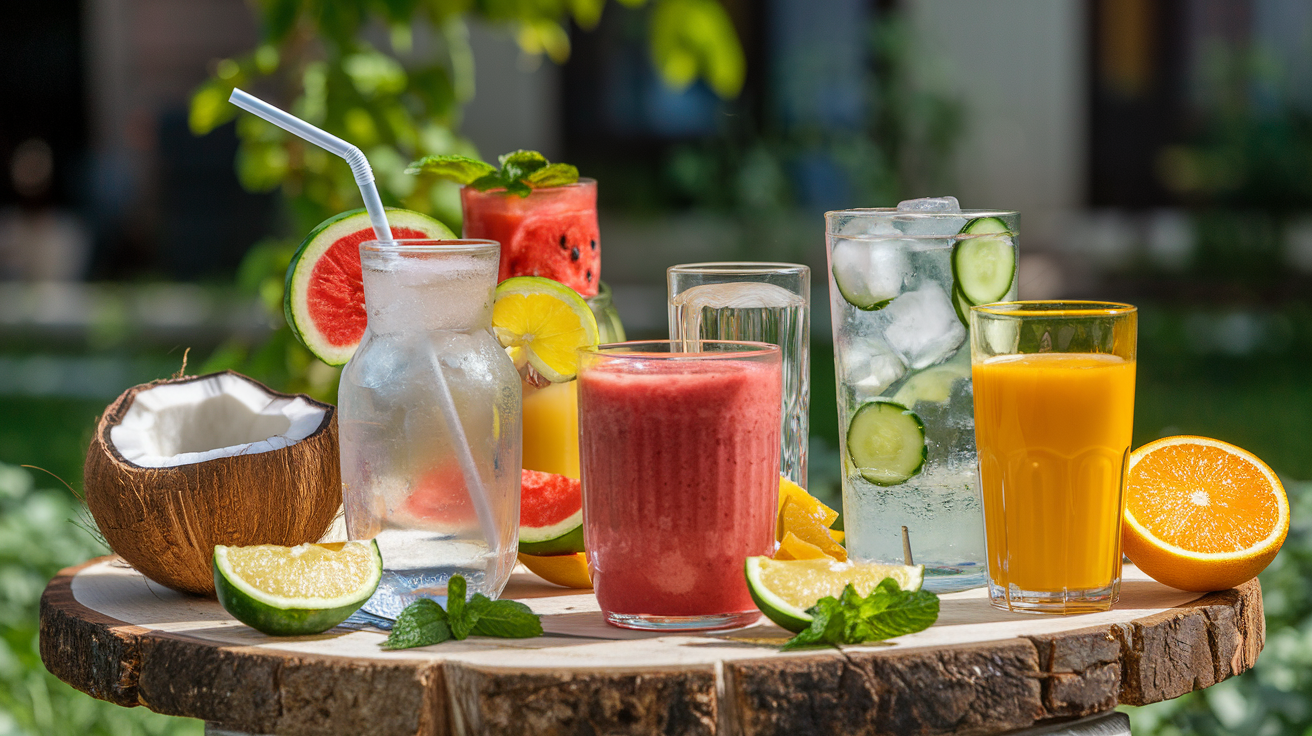
Coconut water: Nature’s sports drink
Coconut water is often hailed as nature’s sports drink due to its natural electrolyte content. It’s rich in potassium, sodium, and magnesium, making it an excellent choice for rehydration. Unlike artificial sports drinks, coconut water is low in calories and free from added sugars.
| Nutrient | Amount per 100ml |
|---|---|
| Potassium | 250mg |
| Sodium | 105mg |
| Magnesium | 25mg |
| Calories | 19 |
Homemade electrolyte beverages
Creating your own electrolyte drinks at home allows you to control the ingredients and avoid artificial additives. Here’s a simple recipe:
- 1 cup water
- 1/4 cup fresh lemon juice
- 1/8 tsp sea salt
- 2 tbsp honey or maple syrup
Mix all ingredients until well combined. This homemade solution provides a balance of electrolytes and natural sugars for quick energy.
Fruit-infused water recipes
Infusing water with fruits not only enhances flavor but also adds trace minerals. Try these combinations:
- Cucumber, mint, and lemon
- Strawberry and basil
- Watermelon and rosemary
Simply add sliced fruits and herbs to a pitcher of water and refrigerate for at least 2 hours before enjoying.
Electrolyte-enhanced smoothies
Smoothies offer a delicious way to combine hydration with nutrient-dense foods. Incorporate electrolyte-rich ingredients like bananas, spinach, and yogurt. Here’s a hydrating smoothie recipe:
- 1 banana
- 1 cup spinach
- 1/2 cup Greek yogurt
- 1 cup coconut water
- 1 tbsp chia seeds
Blend all ingredients until smooth for a refreshing and hydrating drink.
Now that we’ve explored hydrating alternatives to plain water, let’s dive into optimal hydration strategies to keep you feeling your best this summer.
Optimal Hydration Strategies
Calculating your daily fluid needs
To maintain optimal hydration, it’s crucial to understand your daily fluid requirements. A simple formula to estimate your daily needs is:
Body weight (in kg) x 0.033 = Liters of water per day
For example, a 70 kg person would need approximately 2.31 liters of water daily. However, factors such as climate, activity level, and diet can influence this requirement.
| Factor | Effect on Fluid Needs |
|---|---|
| Hot climate | Increases by 0.5-1 liter |
| Intense exercise | Increases by 0.5-1 liter per hour |
| High-sodium diet | Increases by 0.2-0.5 liter |
Timing your hydration throughout the day
Distribute your fluid intake evenly throughout the day for optimal hydration:
- Start with a glass of water upon waking
- Drink a glass before each meal
- Sip water between meals
- Have a glass before bed
Hydration before, during, and after exercise
Proper hydration is crucial for exercise performance and recovery:
- Pre-exercise: Drink 400-600 ml of water 2-3 hours before
- During exercise: Consume 150-350 ml every 15-20 minutes
- Post-exercise: Replace 1.5 times the fluid lost through sweat
Balancing electrolytes in extreme heat
In hot conditions, focus on replenishing both water and electrolytes:
- Include electrolyte-rich foods in your diet
- Consider sports drinks for prolonged outdoor activities
- Monitor urine color (pale yellow indicates good hydration)
Now that you understand optimal hydration strategies, let’s explore common hydration mistakes to avoid.
Common Hydration Mistakes to Avoid
Overhydration risks
While staying hydrated is crucial, overhydration can be just as dangerous as dehydration. Drinking excessive amounts of water can lead to a condition called hyponatremia, where sodium levels in the blood become diluted. This can cause serious health issues, including:
- Nausea and vomiting
- Headaches
- Confusion
- Seizures
- In severe cases, even death
To avoid overhydration, listen to your body’s thirst cues and monitor your urine color. Pale yellow urine indicates proper hydration.
Relying solely on sports drinks
Many people mistakenly believe that sports drinks are always the best choice for hydration. However, they’re not necessary for everyone and can contribute to excessive calorie and sugar intake. Consider this comparison:
| Beverage Type | Electrolytes | Calories | Sugar Content |
|---|---|---|---|
| Water | Low | 0 | 0g |
| Sports Drink | High | ~150 | ~30g |
| Coconut Water | Moderate | ~45 | ~6g |
Choose sports drinks only for intense physical activity lasting over an hour. For regular hydration, water or natural alternatives like coconut water are often better choices.
Ignoring early signs of dehydration
Recognizing early signs of dehydration is crucial for maintaining proper hydration. Watch out for:
- Increased thirst
- Dry mouth
- Decreased urine output
- Dark yellow urine
- Fatigue
- Dizziness
Don’t wait until you’re extremely thirsty to drink water. By then, you may already be mildly dehydrated.
Consuming dehydrating beverages
Some beverages can actually contribute to dehydration due to their diuretic effects. These include:
- Alcoholic drinks
- Caffeinated beverages (in large quantities)
- Sugary sodas
While moderate consumption of coffee or tea is generally fine, balance these with water intake. Remember, hydration is not just about how much you drink, but also what you drink.
By avoiding these common hydration mistakes, you’ll be better equipped to maintain optimal hydration levels throughout the summer. Next, we’ll explore some practical tips for developing a personalized hydration strategy that works for your lifestyle and activity level.
Staying hydrated during the summer months is crucial for maintaining optimal health and well-being. By incorporating electrolyte-rich foods and drinks into your diet, you can effectively replenish lost fluids and minerals. From nutrient-dense fruits and vegetables to refreshing coconut water and homemade electrolyte drinks, there are numerous delicious options to keep your body hydrated and functioning at its best.
Remember to listen to your body’s thirst signals and make hydration a priority throughout the day. By following the strategies outlined in this guide and avoiding common hydration mistakes, you’ll be well-equipped to beat the summer heat and enjoy the season to its fullest. Stay cool, stay hydrated, and make the most of your summer adventures!

